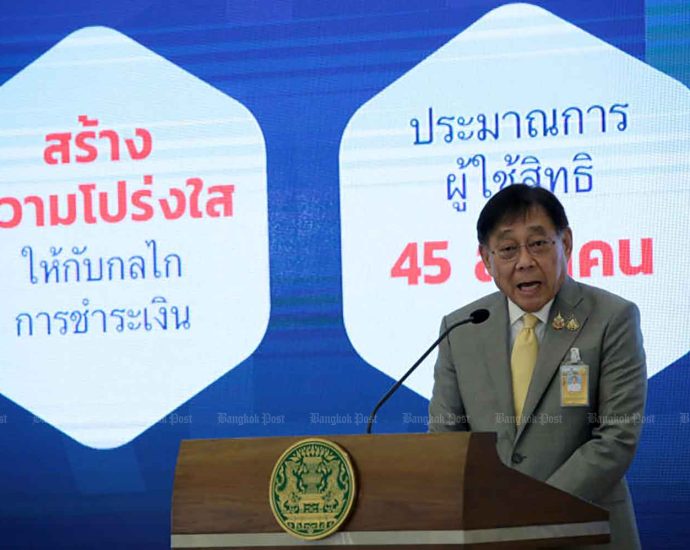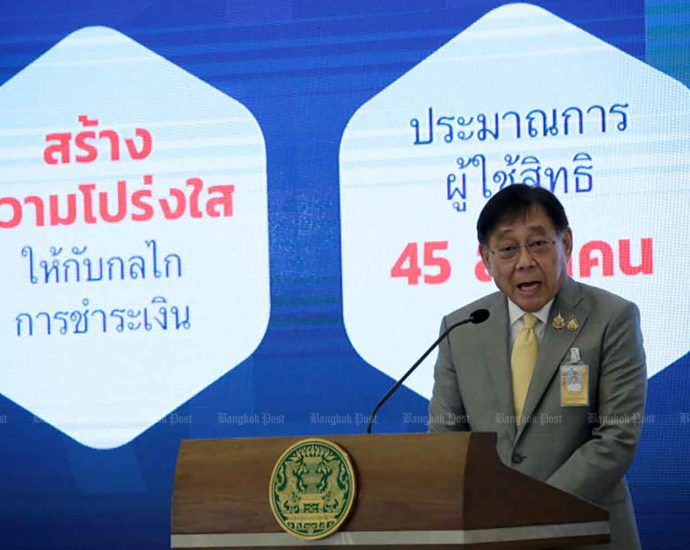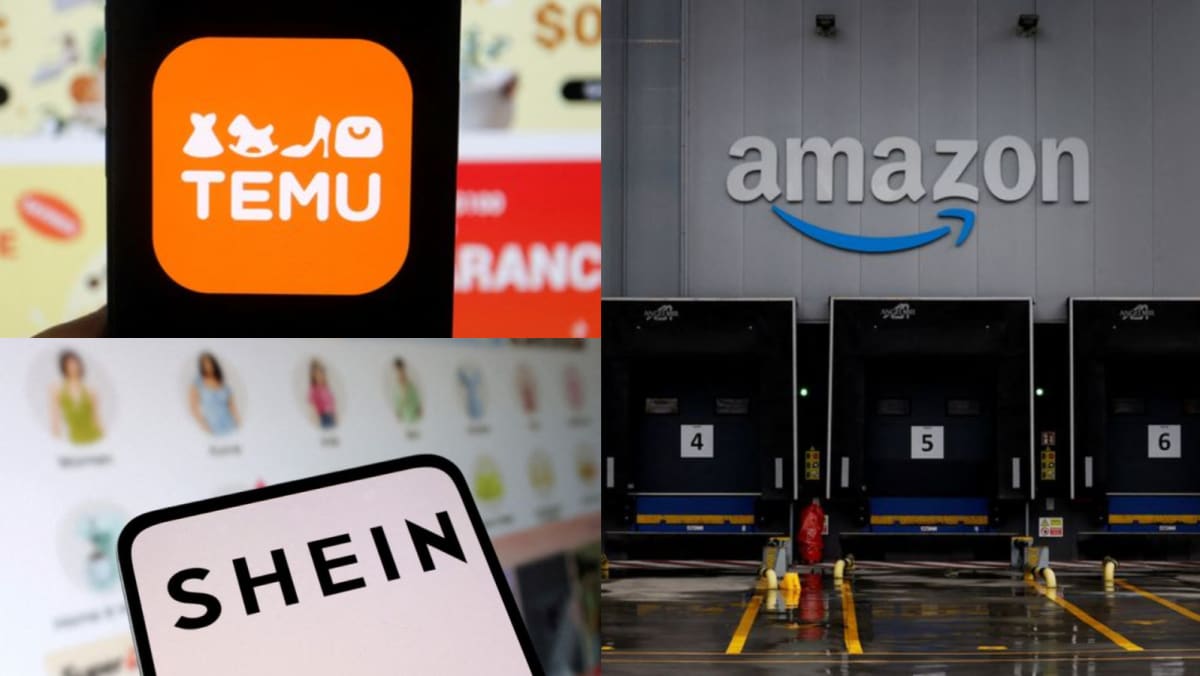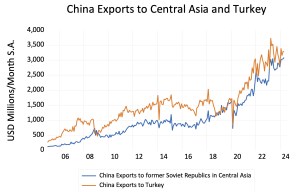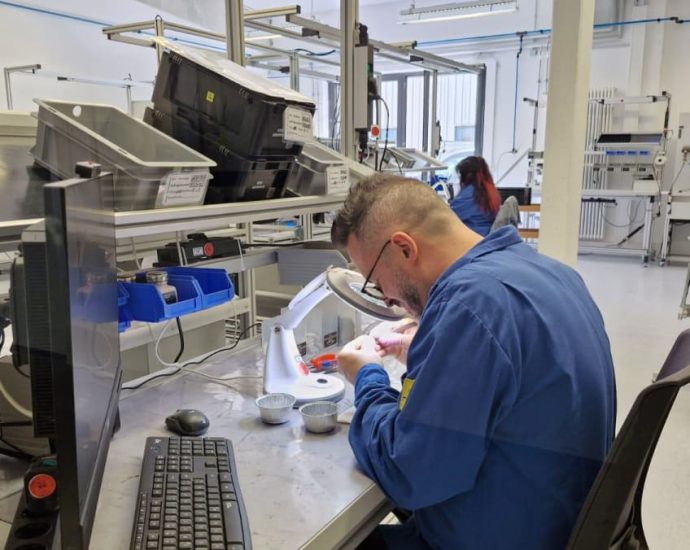Chinese EVs and the race for autonomous AI – Asia Times
In 2015, the Chinese government announced the strategic industrial development policy known as Made in China 2025. Of the ten key industries targeted, new energy vehicles (NEVs) have arguably achieved the greatest success, changing the dynamics of the global auto industry and thoroughly alarming US and European governments.
They have also attracted the attention of US scientist and Pattern Computer CEO Mark Anderson, who sees an unprecedented challenge to Western supremacy in the technologies that support China’s hyper-competitive electric vehicle (EV) industry. Pattern Computer is a machine learning and AI company headquartered in the state of Washington.
In an essay entitled “THE RACE FOR AUTONOMOUS AI: The Key to Global Technical and Economic Dominance,” which appeared in the July 7 edition of his Strategic News Service Global Report on Technology and the Economy, Anderson identified the EV as an enabler for critically important technologies.
In his view, the winner of the race to lead the global EV market “will, in one product, gain leverage or domination in:
- autonomous AI
- light-weighting new materials
- advanced manufacturing
- lidar/radar
- computer vision
- advanced computing software and hardware
- advanced chips
- batteries
- energy grid redesign
- charging-station design and control
- broadband realtime networking
- data collection/management technologies
- (and of course) the data itself collected around the world
- oh yeah, and money – lots of it.”
Electric vehicles, therefore, are not just a “like to have” but a “must have” industry.
Autonomous AI is at the top of the list because it could deliver what OpenAI/ChatGPT promises to deliver but can’t – advanced general intelligence (AGI). ChatGPT and models like it are “for tasks that are language-related – only.”
“Instead of – or in addition to – the AGI hunt,” writes Anderson, “let’s focus on autonomy. After all, a compute system that can perform successfully on its own, without human guidance, may be the ultimate intended purpose of AGI in any case.”
“As with AGI,” he continues, “no one has yet succeeded in the hunt for autonomy, although it is likely that Elon Musk and Tesla have pressed the limits of the types of tools (neural networks, or NNs) they’re using.” Tesla has been troubled by numerous accidents, allegations of false advertising and the delayed launch of its robotaxi.
After noting that China appears to have surreptitiously acquired its autonomous driving technology from Tesla, Anderson asks, “What is China doing to cement a victory in this race for global domination in dozens of top technology categories?”
The answer, he writes, is “Everything it can, including:
• Conducting the world’s largest experiment in driverless cars, in Wuhan, operated by Baidu – about to jump from 800 to 1800 robotaxis
• Having cities designate special test areas for autonomy testing
• Censoring / deleting any news of deaths and accidents by autonomous vehicles
• Having passed laws preventing any autonomy data from leaving China, with the intention of keeping foreign automakers from benefiting cross-border
• Setting up ‘research’ stations on autonomy in Silicon Valley – a typical move for stealing IP in the past, as in the case of the destruction of Motorola
• Providing low- to zero-cost loans to virtually all EV companies, including those losing money (which is the majority)
• Picking favorites early – such as Huawei, Baidu, and BYD – and providing additional permitting and financial subsidies as needed
• Moving fast into the EU market, before the EU and Germany can work out a response, and working hard to delay such discussions
• Quickly building new plants in Eastern Europe, Mexico and the US, to get inside tariff borders before these ‘victim markets’ can respond to the current export onslaught of subsidized EVs”
In other words, China is serious about EVs in a way that makes US President Joe Biden’s efforts to promote them look pathetically inadequate and Donald Trump’s plan to undo them ill-conceived and dangerously ignorant.
“Today,” says Anderson, “there are something like 300 car companies in China, with about 100 making some form of EVs, essentially all of them subsidized…” Keeping in mind that the US and EU also subsidize their EV industries (and that Tesla pads its income statement with sales of carbon credits), let’s put this statement in context.
As pointed out in Automobile History on the history.com website: “Thirty American manufacturers produced 2,500 motor vehicles in 1899, and some 485 companies entered the business in the next decade.” The number of US automakers then dropped to 253 in 1908 and 44 in 1929, when about 80% out of a total of 5.3 million vehicles were produced by the “Big Three” – Ford, General Motors and Chrysler.
In 2019, according to Bloomberg, there were some 500 EV makers in China. Now, five years later, consulting firm AlixPartners says there are 137 Chinese EV brands, of which 19 should be profitable by the end of the decade. The South China Morning Post writes “just 19,” but it would be more to the point to say “perhaps as many as 19.”
China’s national industrial policy has simply replicated the venture capital free-for-all and winnowing-out process that characterized the US auto industry in its formative years.
From 2019 to 2023, China’s NEV production (including battery EVs, hybrids and a small number of hydrogen fuel cell-powered vehicles) rose from 1.2 million to 8.9 million units, accounting for about 30% of the nation’s total motor vehicle production.
According to the International Energy Agency (IEA), China accounted for nearly 60% of worldwide new EV registrations (including hybrids) in 2023. Europe accounted for just under 25% and the US for about 10%, IEA data shows.
Furthermore, the IEA notes that: “The year 2023 was the first in which China’s New Energy Vehicle (NEV) industry ran without support from national subsidies for EV purchases, which have facilitated expansion of the market for more than a decade.”
Having achieved sufficient economies of scale, Chinese automakers no longer need them. According to Dialogue Earth, local subsidies and tax breaks are also likely to be phased out as government policy shifts “from carrot to stick.”
As for autonomous driving, recall that in 2019 Tesla sued one of its Chinese engineers for allegedly stealing its Autopilot source code and taking it with him to Xpeng. And that two other Tesla engineers also defected to Xpeng, which is known as China’s “Tesla clone.”
Furthermore, in Anderson’s estimation, “At a time when very few car companies worldwide have anything approaching even fault-ridden autonomous driving software, China suddenly now has about 30 EV companies with this ability.” Including Huawei, which provides autonomous driving technology to several Chinese automakers.
But it is not just the Chinese. Earlier this year, Volkswagen (VW) and Xpeng agreed to a “strategic technical collaboration” for the rapid development of “intelligent connected” EVs for the Chinese market. VW owns 4.99% of Xpeng.
VW also plans to form a 50-50 joint venture with Rivian Automotive of the US “to build on Rivian’s industry-leading software and electrical architecture to create best-in-class software-defined vehicle technology platform.”
In Japan, Toyota, Honda, Sony and a start-up called Turing are all working on software-defined and autonomous vehicles. Honda’s Traffic Jam Pilot, which was launched last March, “helps mitigate driver fatigue and stress while driving in a traffic jam.” As explained on the company’s website:
“While driving on an expressway, if the vehicle gets caught in traffic congestion, under certain conditions, the system takes control of acceleration, braking and steering while monitoring the vehicle’s surroundings on behalf of the driver. Without the need to operate the vehicle to follow the vehicle in front, stop and resume driving, the driver can watch television/DVD on the navigation screen or operate the navigation system to search/set a destination.”
The system determines the vehicle’s position using external and cameras, radar and LIDAR sensors, a Global Navigation Satellite System, high-definition maps, and an internal camera that monitors the driver.
Turing, a start-up with the mission “We Overtake Tesla,” goes a step further. Believing that “what is necessary for autonomous driving is not good eyes, but a good brain,” the company is developing AI that “directly issues driving instructions from camera images… without using many sensors or high-precision maps.”
Inspired by English mathematician and computer scientist Alan Turing, the Japanese company aims to develop an autonomous driving system that thinks and acts like a human being. As explained by TechTarget, “Turing proposed that a computer can be said to possess artificial intelligence if it can mimic human responses under specific conditions.”
In summary, Anderson states that “Autonomy – on the land, in and under the sea, and in the air – is a pragmatic goal of AI that will replace the fantastical dreams of AGI rather quickly, as the latter technology becomes well accepted as a language aid, but not for use in trust-based situations.
“True autonomy will require… a complete, demonstrable lack of hallucinations and other unavoidable failure modes. Autonomy, and not ChatGPT, will become the ultimate ‘Turing test’ for advanced AI.”
As Anderson implies, there is more to this than China leading the new industrial revolution. Dr. Paul Kallender, defense expert at Japan’s Keio Research Institute, suggests that we “re-imagine the EV as an autonomous weapons system operating in a total surveillance information environment.”
It depends on a dozen advanced technologies with dual civilian-military applications that must perform flawlessly in difficult and dangerous environments.
Follow this writer on X: @ScottFo83517667



